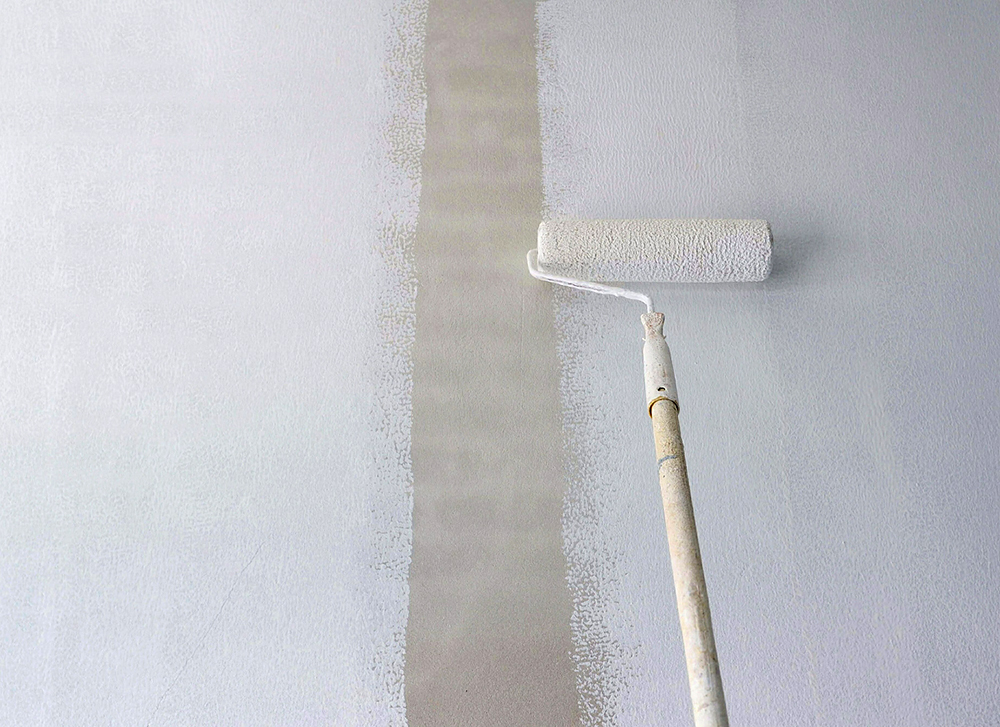
Almost Any Concrete Surface Can Be Painted!
The short answer is yes! If the concrete surface is in good condition, then it most likely can be painted. This includes both interior and exterior surfaces. Here are some interior concrete surface examples.
- Floors
- Walls
- Countertops
Additionally, here are some exterior concrete surface examples.
- Patios
- Sidewalks
- Pool decks
- Walkways
Best Ways to Paint Interior Concrete Surfaces
Like any paint job, you want to make sure you know what you are getting involved with. Tick all the right boxes on you checklist. Is the surface clean? Are there any cracks? Does it need any repairs beforehand? Once it’s concluded that the concrete surface is ready to be painted, you may go ahead with the following method.
- Wash the floor: Make sure the surface is clean and if you need to take time to wash it first, you should always ensure the surface has adequate time to fully dry.
- Sanding and Vacuuming: A smooth surface is best. Residue can cause unwanted bumps and “seedy” appearances.
- Fill Cracks and Holes: If you answered “Yes” to the “Are there any cracks?” question, then you should address this first. Patch the area and let it dry long enough to avoid any leftover moisture.
- Primer: This step cannot be stressed enough. Smaller projects may only call for one coat, but sometimes a second coat of primer is necessary.
- Paint: Once the primer has set and dried properly, it’s time to paint the concrete surface. It is not recommended to use an old roller, or the same roller used for the primer. A clean roller is best for this step. If you are applying more than one coat (which is recommended), you must allow each coat to dry before applying the next.
- Seal: Now it is time to seal your work. Applying several coats of sealer is essential too. Just like the paint, you will need to allow each coat to set and dry in between.
Best Ways to Paint Exterior Concrete Surfaces
The best, and longest lasting exterior concrete paint projects start with quality preparation and repairs, if any. Similar steps to the interior surface are required for exterior surfaces. You may need more tools for exterior surfaces to tackle hardened residue and/or build up. If the patio area, for example, was near a grill, you will want to degrease the surface to allow for proper adhesion. Here is the method to follow:
- Sanding/Degreasing: You can use heavy duty brushes, sanders, and scrapers for this step.
- Sweep/Vacuum: Being outdoors, the surface may have dust, dirt, leaves, and more. You will want to sweep and vacuum up any debris from the dry surface.
- Fill Cracks and Holes: If there are any cracks or holes, it’s important to fill them in and even out the surface.
- Seal: Once the surface is completely dry after being filled in, use a sealer.
- Primer: Again, this step is often underestimated. Smaller surfaces may only call for one coat or primer, but sometimes a second coat is necessary.
- Paint: Now it’s time to paint. Use a brush or roller to paint the largest areas first. Then go around the edges with a sealer for added protection.
- Seal: Next, it is time to seal your work. You may need to apply several coats of sealer. Just like the paint, you will need to allow each coat to set and dry properly before applying the next one.
Knowing What Type of Paint to Use
Durability is key. For example, epoxy-based paints provide high durability. You will want something that can withstand different conditions such as rain, snow, dust, dirt, mud, etc.
Save time and money by hiring our professional painters to give your Philadelphia home or business a fresher, more modern look. Contact Mastercraft Painting and Finishes for custom interior or exterior concrete painting in addition to our other services. Call us at 267-496-5307 or contact us online to book an assessment and get a FREE estimate for painting your home.
